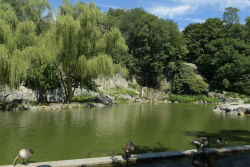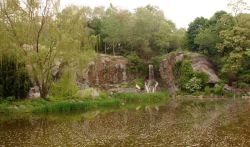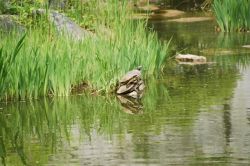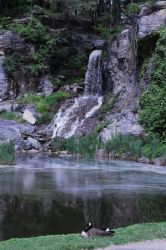Morningside Park
The Daily Plant : Wednesday, February 10, 2010
A Closer Look At New York City's Historic Harlem Parks (Part I)
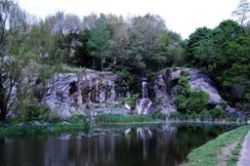
photo by Malcolm Pinckney
“What happens to a dream deferred?
Does it dry up/ like a raisin in the sun? […]
Or does it explode?”
-Langston Hughes, from Harlem (1951)
In the 1920s, Langston Hughes was one of the thousands of African American poets, writers, artists, musicians and intellectuals who settled in Harlem and whose dreams exploded in great artistic achievements, shaping the neighborhood around him during the Harlem Renaissance. During Black History Month, we celebrate the four historic Harlem parks that are central to one of New York’s most famous neighborhoods.
“At dawn, behold! the pall of night was gone,
Save where a few shrubs melancholy, lone,
Detained a fragile shadow.”
– Claude McKay, from Morning Joy (1922)
Each morning, the sun rises over Morningside Park, a winding, rugged area of parkland located on the eastern side of the Manhattan schist in Harlem. Before it was named for the sunrise, Morningside Park was known to Native Americans as Muscoota, Vredendal (or Peaceful Dale) to 17th century Dutch settlers and Vandewater Heights after its Dutch landowner in 1738. In 1867, Andrew Haswell Green, Commissioner and Comptroller of Central Park, recommended that the rocky terrain be turned into a park rather than zoned for Manhattan’s grid system.
Like the landscape, the initial planning phases were somewhat rocky. In 1887, 17 years after the City of New York was granted jurisdiction of the land, landscape architects Olmsted and Vaux set out to finish reshaping the park. The finished product, wrote former Parks Commissioner Samuel Parsons Jr. of architect Vaux, was “perhaps the most consummate piece of art that he had ever created.”
Since Claude McKay and his fellow intellectuals lived in Harlem, Morningside Park has continued to undergo several renovations. Three statues were brought into the park between 1900 and 1914; and the 1930s and 1950s saw the construction of playgrounds, basketball courts, and softball diamonds in the east and south parts of the park. In the 1990s, a $5 million capital project resulted in a glittering ornamental pond and waterfall, completing the natural feel of the land. In September 2008, Parks further increased access to the park by cutting the ribbon on a brand new playground that features innovative play equipment and ADA access. Parks has teamed up with Friends of Morningside Park, Columbia University, the police and local elected officials to ensure that Morningside Park remains as beautiful, natural, and as inspirational as it did during the Harlem Renaissance.
“A people without the knowledge of their past history, origin and culture
is like a tree without roots.”
-Marcus Garvey (1887-1940)
The history of Harlem’s Marcus Garvey Park reaches far back into the colonial period. Dutch settlers named it Slangberg, or Snake Hill, after the creatures that slithered through the hilly area. In 1835, local citizens won their fight to preserve the land as a public park rather than raze it to make room for city streets. Their park welcomed a community center and child health station in the 1930s. The 47-foot cast-iron watchtower built in 1856 to guard the mostly wooden city against fire was designated a landmark in 1967 and added to the National Register of Historic Places in 1976. Originally named Mount Morris Park, the park was renamed Marcus Garvey Park in 1973 after the black activist, orator and journalist.
Marcus Garvey Park continues to be a unifying element for the community who once fought to keep it. The Pelham Fritz Recreation Center includes an amphitheater and a swimming pool, and the two children’s playgrounds allow all young visitors of all abilities to play. Families and neighbors can gather together on hot summer days to swim in the outdoor pool and enjoy jazz performances from the City Parks Foundation’s annual Charlie Parker Jazz Festival. The community also plays a large part in the upkeep of the park with groups like the Marcus Garvey Park Alliance, the Marcus Garvey Dog Run Committee, and the Mt. Morris Park Community Improvement Association, as well as the police and local elected officials working with Parks to ensure its safety and cleanliness for another 100 years.
In 2008 Mayor Bloomberg announced plans for a $5 million renovation of the amphitheater. The project is funded in part by a $1 million contribution by The Rodgers Family Foundation.
Written by Kimberly Hanson
QUOTATION FOR THE DAY
“Advice is like snow - the softer it falls, the longer it dwells upon, and the deeper in sinks into the mind.”
Samuel Taylor Coleridge
(1772 – 1834)
Check out your park's Vital Signs
Clean & Safe
Green & Resilient
Empowered & Engaged Users
Share your feedback or learn more about how this park is part of a
Vital Park System





